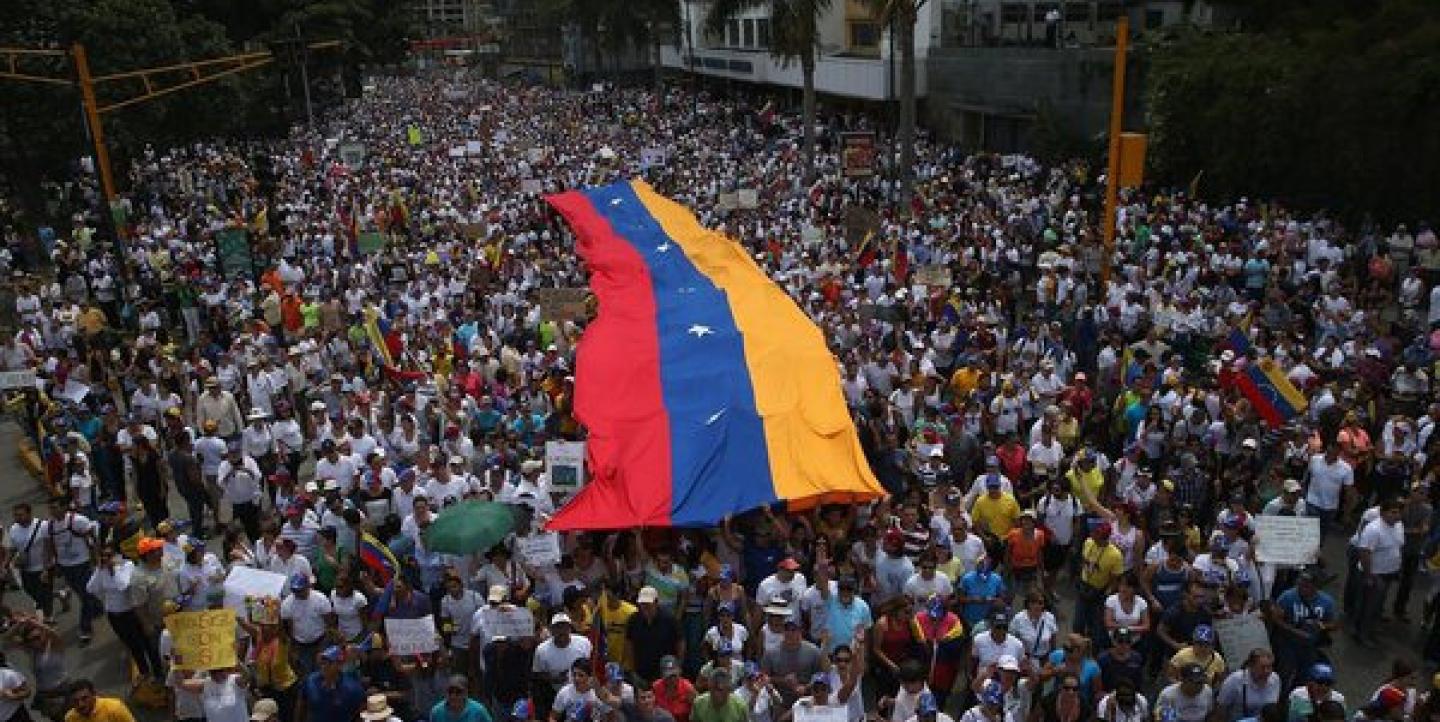Venezuela Decoded is an online platform to help people make sense of conflicting accounts about that country’s ongoing civil unrest that have been flooding social media.
The idea began in February, when three Venezuelan journalists living in Silicon Valley in the U.S were frustrated with trying to find out what was really happening back home.
A student protest had quickly spiraled into violence and a full-on clash between government and opposition forces. With the government blocking any attempt at independent journalism, Twitter had become the last independent channel for information and everyone was using it — the government, the opposition officials, journalists and citizens. Tweets were flying at the rate of 1,000 per hour, their contradictory reports parrying on cell phone screens. Who could keep up? Which tweeters could one believe?
Mary Aviles, a 2013 Knight Stanford Journalism Fellow, wondered if there was a way to make it easier to sort through the chaotic and contradictory stream of information coming out of her home country. She connected with current Knight Stanford Journalism Fellows Martin Quiroga, a computer systems architect originally from Bolivia, and Ana María Carrano, a Venezuelan journalist, as well as journalist Douglas Gómez (Carrano’s husband). Soon, Aviles, Carrano, Gómez and Quiroga went to the white boards that cover the walls of the Knight Garage in Stanford, a gathering space fellows use for brainstorming, and came away with an initial concept and plan. Over a few intense weeks, they recruited some additional team members with skills needed to get Venezuela Decoded rapidly built and launched.
Aviles, Carrano and Gómez pulled together lists of sources they trusted in Venezuela. Quiroga, Carrano and Aviles mapped out the digital structure. They found open-source tools to build their site. Quiroga used Twitter’s API (application programming interface) to create a customized timeline of selected Twitter accounts, and TimelineJS to build a timeline of events.
The platform is a reported and curated website that provides daily summaries of events, a timeline, photos and Twitter feeds, in English and Spanish, from journalists, human rights activists and NGOs, as well as government and opposition leaders. News summaries are checked against incoming news reports and the trusted sources — in government and elsewhere — of the Venezuelan team members.
The Venezuela Decoded team has big hopes and ambitions for its project.
“What I hope for Venezuela Decoded is to became a reference site for international audience and media about the Venezuelan conflict, a kind of a landing page,” Aviles said. “ At the same time, the idea is to create a methodology (decoding) that allows journalists to create single topics sites in no time combining crowdsourcing and open-source tools with journalistic skills, a mix between technology and journalism. I believe we can contribute leveraging the power of social media in journalism.”
Carrano said they are intent on not becoming advocates — other than for information and transparency.
“We realized that it was necessary to listen all the parts of the conflict in order to offer basic and deeper understanding to Venezuelan crisis,’’ she said. “That is why we decided to include sources not only from journalists, NGO’s and human rights activists, but also from the opposition and government leaders directly related to this conflict. To track the development of the crisis, we produced a timeline with verified facts.”
The team is working now to improve the site and its ability to scale up, said Quiroga. “We want to make it more dynamic.”
An immediate goal is to make Venezuela Decoded visible on mobile. They also plan to enable searches by words and dates and go back in time to include tweets leading up to the crisis. A Who’s Who section with profiles of government and opposition leaders is also on their list of upgrades.
Inspired by Syria Deeply, an independent digital media project led by journalists and technologists, Quiroga wants to add a map that offers “something more than points where things happen.”
This is an excerpt of a post originally published on the John S. Knight Journalism Fellowships at Stanford University website. It was excerpted and republished on IJNet with permission.
The Knight Fellowships fosters journalistic innovation, entrepreneurship and leadership. Each year, 20 individuals from around the world get the resources to pursue their ideas for improving journalism.
Image CC-licensed on Flickr via MARQUINAM.

